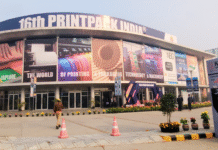
A recent full-page advertisement in the well-known Mumbai newspaper, Free Press Journal, has led to a row of sorts and a debate in the newspaper industry as well as advertisers over circulation statistics.
The advertisement, which takes a dig at newspapers for allegedly inflating circulation numbers, says, “Caution, News Publishers. Please refrain from financing raddi copies (waste copies) with complimentary copies. Else one day, one day in the near future your companies will be reduced to the status of ‘RADDI PVT LTD’. Hope wiser counsel will prevail. Kindly don’t create raddi value for your shareholders. Let honesty prevail from the new year.”
The advertisement came as a surprise to the industry. Indian Newspaper Society (INS) president Rakesh Sharma was quick to reply, saying Free Press Journal must offer proof if unsold copies were being marked as raddi (waste). Refuting the claim, Sharma said FPJ‘s view doesn’t reflect the viewpoint of the entire industry. He said complimentary copies are not necessarily sold as a raddi and attract a wide spectrum of readers in flights, hotels, or other places.
Abhishek Karnani, the director of the Free Press Journal Group and vice-president of the India chapter of the International Advertising Association, told the media the ad intended to “bring transparency and credibility” to the print industry, which is struggling to get advertisements after the pandemic. According to Karnani, a section of publication houses show inflated circulation figures to mislead advertisers and get ads, while those who do not, lose out on ad revenue. Karnani claimed that unsold copies are marked as ‘complimentary copies’ to balance the books.
In fact, ‘raddi economics’ as it is called is not new in the Indian newspaper industry. Though never acknowledged publicly, it has been a rather unofficially accepted practice for some newspaper groups to print more copies. Because increased circulation allows newspaper houses to demand increased advertising rates. The Audit Bureau of Circulations, it may be mentioned, is the official auditor of member organizations.
Newspaper revenue is heavily skewed toward ad revenue compared to circulation revenue. Newspaper circulation, which has been gradually falling in the wake of the digital onslaught, took a severe hit during the Covid pandemic, after which advertisers started looking for other mediums. Since then, advertisement revenue has recovered to some extent but circulation numbers are still low, because of which newspaper houses are forced to offer discounted rates to lure potential advertisers.
While some insiders claim this practice is still followed, others say most big media houses have strict circulation policies and do not support this policy. One senior business executive of a leading newspaper house said it wouldn’t make business sense anyway to print, say, 1 lakh copies worth Rs 15-18 each and sell them at Rs 15 per kg to get discounted ads.
There was, however, a unanimous feeling that such controversies do affect the credibility of newspapers among advertisers, who are anyway aware of this practice and factor it in while offering advertisement rates. “It is a push and pull for newspapers to get good ad rates these days, unlike earlier in pre-digital era when the top media houses could demand whatever they wished.” Credible audited numbers, whether readership or circulation, are the only benchmark for newspaper houses to get back advertisers in a big way and at better rates, they feel.
Pamex and drupa
While the newspaper industry seems to be slowly recovering, the raddi controversy notwithstanding, the printing and packaging industries are eagerly looking forward to two big events in the next few months – Pamex Mumbai and drupa 2024, whose success will signify the resurgence of the sectors after the Covid pandemic blow.
Pamex 2024, scheduled to take place from 6-9 February 2024 in Mumbai, will cover the entire gamut of print, including labels, cartons, flexible packaging, corrugation, textile printing, and the soft signage industry. Drupa, taking place in Dusseldorf, Germany, from 28 May to 7 June after eight years, will focus on digitalization, sustainability, circular economy, connectivity, platform economy and their impact on the industry.
Indian Printer and Publisher and Packaging South Asia’s journalists will be on ground zero, bringing live and in-depth coverage of the two events. Stay tuned for more!















